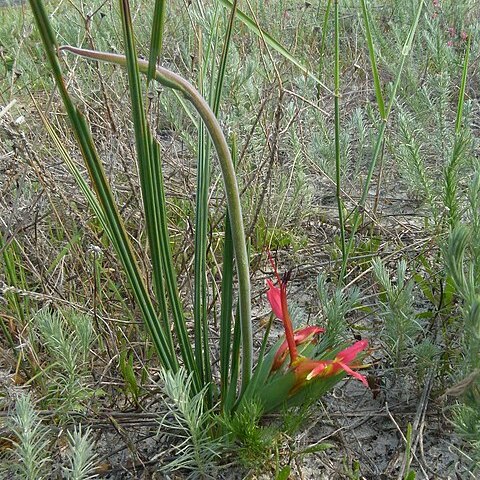An erect herb. It keeps growing from year to year. It grows 40 cm high. It has a corm that tends to be deep underground. The leaves are stiff and erect. They are strongly pleated or folded. The flowers are on a side branch that comes out parallel to the ground. The flowers have 2 lips and stamen that are longer than the flower tube. The flowers are bright red. The top part of the flower stalk does not have flowers and looks like a rat's tail.
Cormous geophyte, 15-40 cm, main spike axis sterile. Leaves linear-lanceolate, glabrous. Flowers on lateral branches, highly zygomorphic, upper tepal tubular below, limbs of upper and lower lateral tepals spreading, inner bracts divided to base, ovary smooth.

